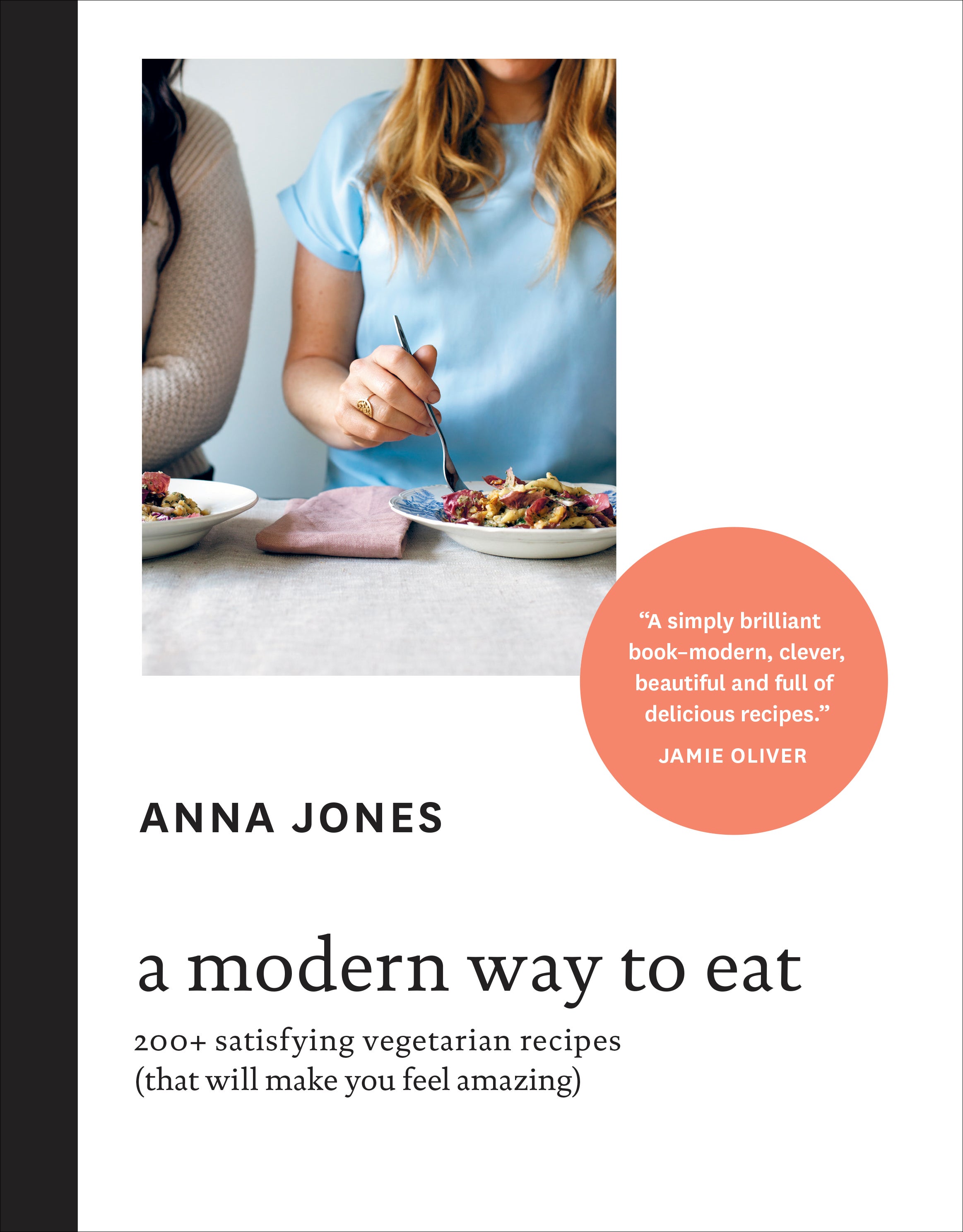



















In A Modern Way to Eat, Anna Jones writes about the changing ways we find ourselves eating, taking a refreshing new look at vegetarian cooking.
This is a bowl filled with a few favorite things, as well as a killer harissa dressing, burnished seed-encrusted halloumi, my new favorite grain (freekeh), and, of course, some avocado. I vary the veggies I use here according to the season. I have given you my summer version in the recipe, but below are some ideas for the rest of the year:
Spring: asparagus, peas, spring greens
Summer: tomatoes, yellow beets, kale
Autumn: red beets, grated carrot, kale
Winter: have a bowl of soup
Freekeh is a type of wheat; the word means “rubbed” in Arabic. The story goes that in 2300 BC, a shed containing the harvest’s young green wheat burned down. The locals thought the crop was ruined, but they discovered that rubbing the burnt husk off the wheat left it edible and in fact toasty and delicious. If you can’t get freekeh, any quick-cooking grain, like millet or quinoa, would work, too.
Directions
- Measure out the freekeh in a mug or measuring cup, making a note of the level it comes up to, then put it into a bowl and cover it with cold water. Rub the grains in your hands, then drain and wash once more in the same way. Put the freekeh into a pan. Fill the mug or jug to the same level with water and add to the pan, then repeat so you have double the volume of water as of freekeh. Add a pinch of salt and a dollop of coconut oil, bring to a boil, and simmer for 15 minutes, until soft but still with a little bite.
- Meanwhile, make the dressing. Finely slice the green onions and fry them in a little coconut oil until just starting to brown, then scoop them into a jug and add the honey, harissa, olive oil, and lemon juice. Season with salt and pepper and mix well.
- Cut the tomatoes in half. Peel the beets, and use a mandoline or your excellent knife skills to slice them very finely. Remove the stalks and shred the leaves of the kale, put into a bowl with the juice of the lime and a pinch of salt, and scrunch with your hands for a minute.
- Cut the avocado in half and remove the pit, then, with the skin still on, use a small knife to make incisions lengthwise along the avocado to form slices.
- Put a frying pan over high heat and slice the halloumi thinly. Have your seeds standing by. Put the halloumi into the hot dry pan and cook until brown on one side, which will take about a minute, then flip over and brown the other side. Scatter the seeds over the cheese and turn the halloumi in the pan until it is coated with them. Take off the heat.
- Once the freekeh is cooked, drain it and dress it with the lemon juice, a drizzle of olive oil, and a pinch each of salt and pepper. Chop the mint and dill and mix into the freekeh.
- Serve in shallow bowls, topped with all the rainbow vegetables, the seeded halloumi, and generous spoonfuls of the harissa dressing.
Reprinted with permission from A Modern Way to Eat, copyright © 2015 by Anna Jones, published by Ten Speed Press, an imprint of Penguin Random House LLC.
